
Tanzania has a variety of National Parks and Games reserves to Visit. It is among the countries with great game parks and a variety of wild animals. You are welcome to visit our Top National parks and game parks
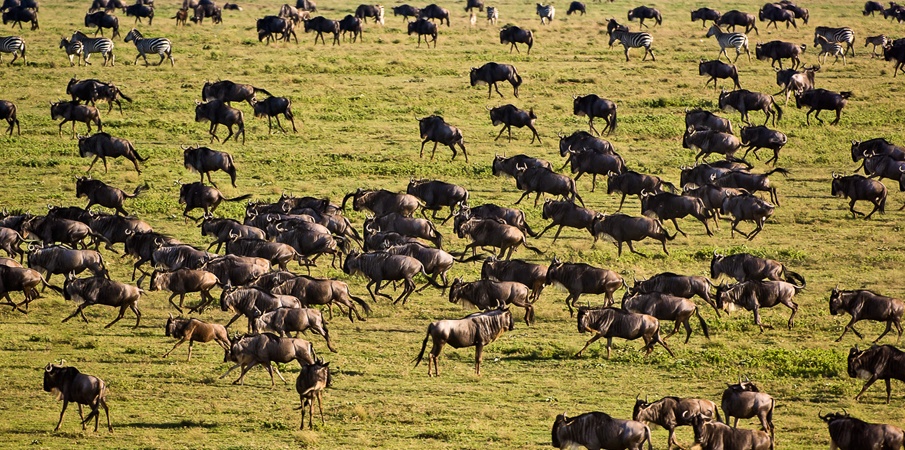
The Serengeti covers 14,763 sq km, is flourishing with magnificent wildlife. It lies between the shores of Lake Victoria in the west, Lake Eyasi in the south, and the....
read more
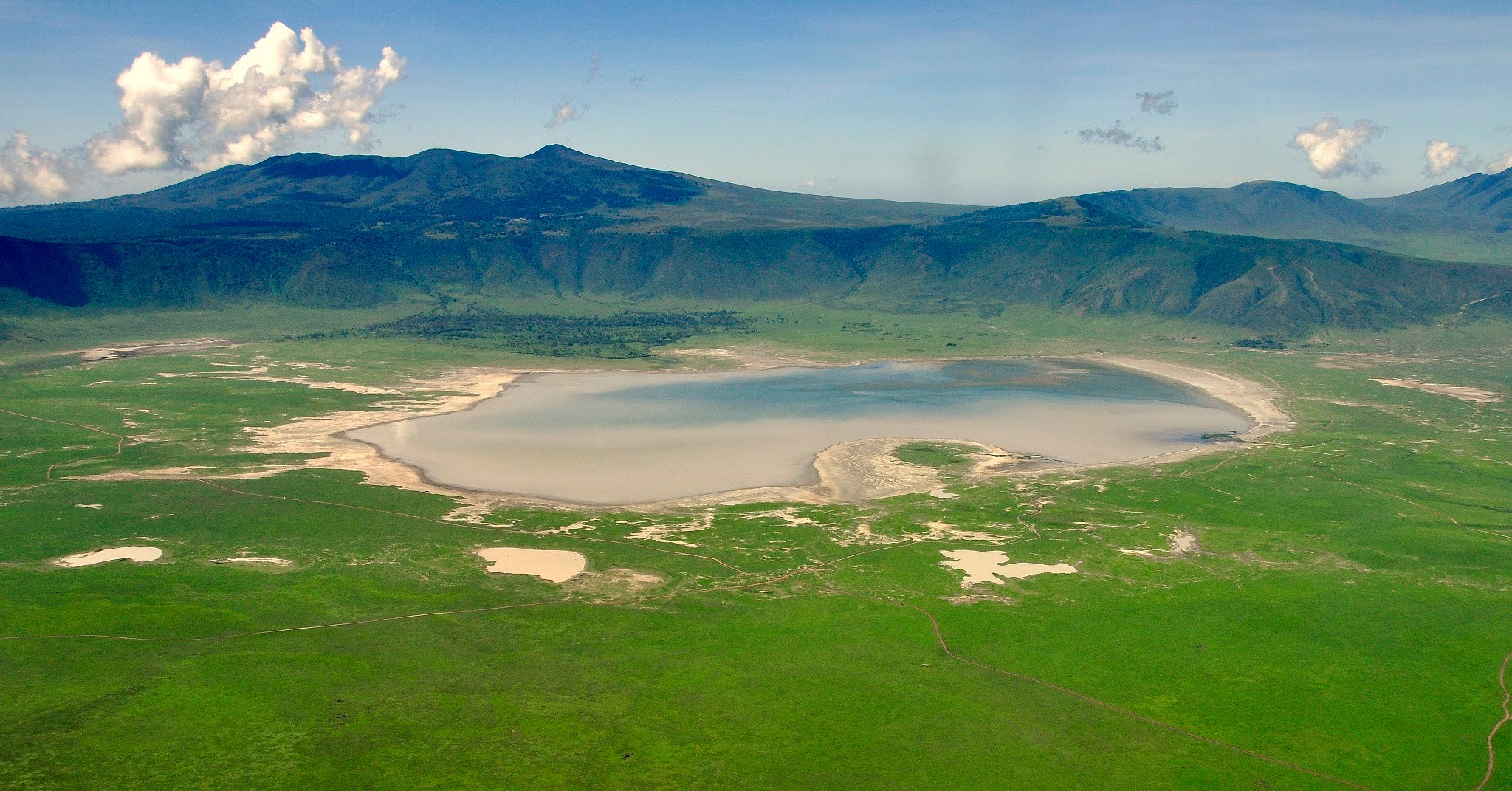
Ngorongoro Conservation Area (NCA) was established in 1959. It is located 156 kilometers west of Arusha.
read more
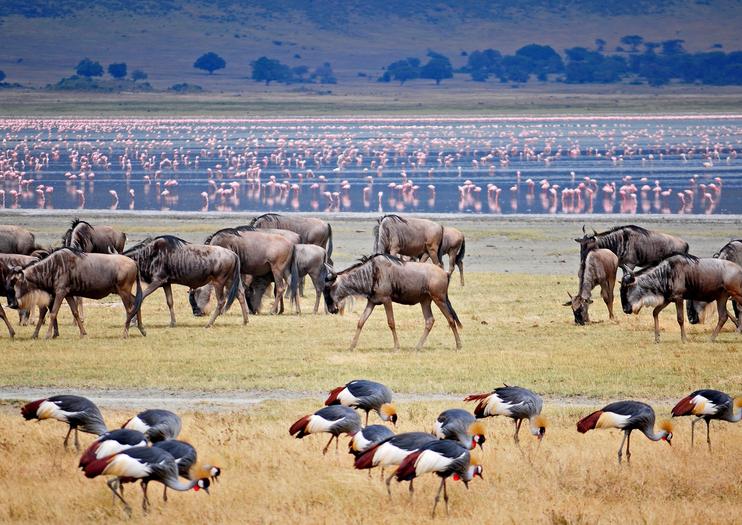
Lake Manyara was once a famous hunting ground, now it is one of Tanzania’s most attractive sanctuaries. Nestling into the...
read more
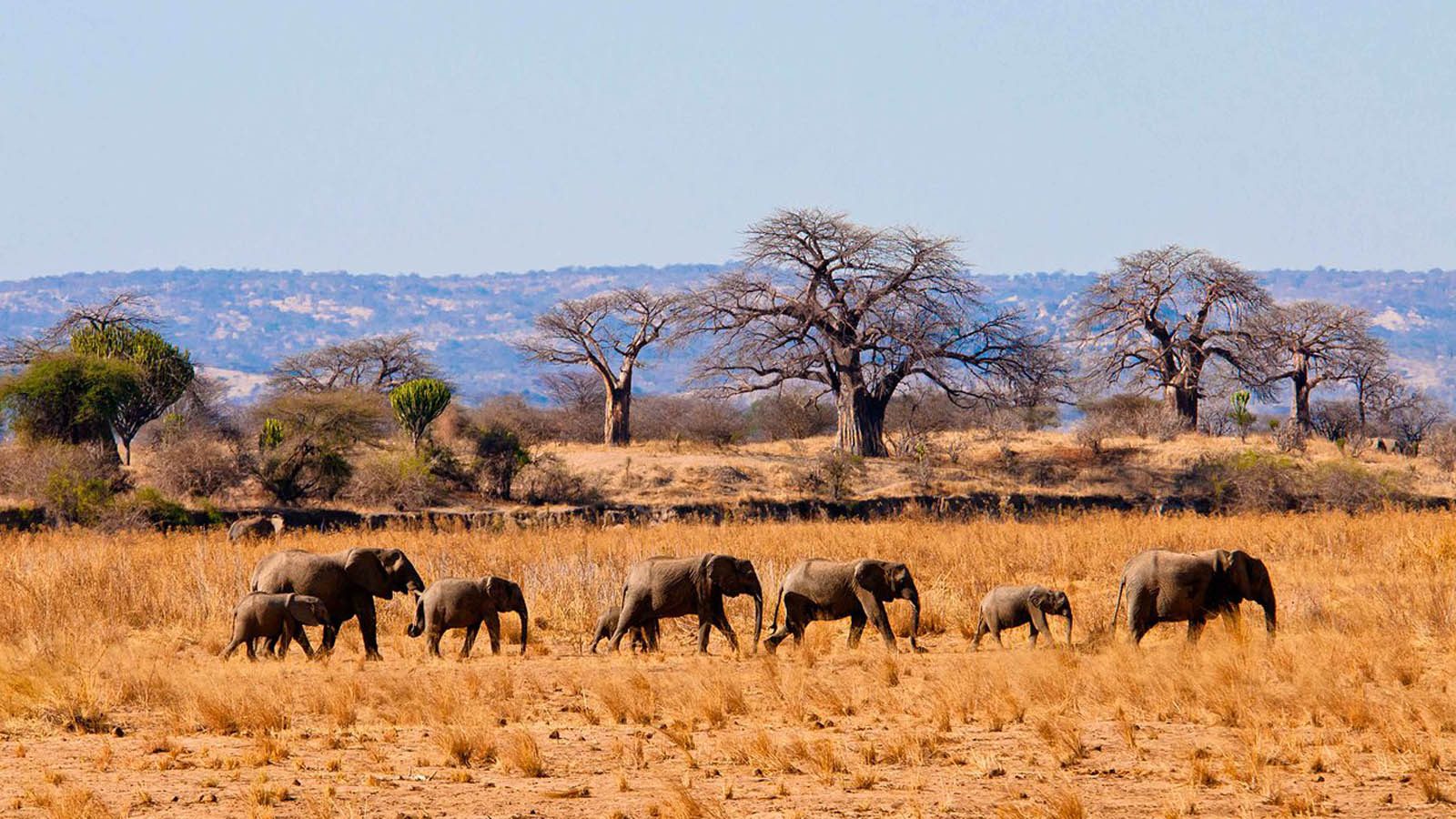
Tarangire National Park is the sixth largest park in Tanzania. This beautiful park stretches southeast of Lake Manyara around the Tarangire River.
read more
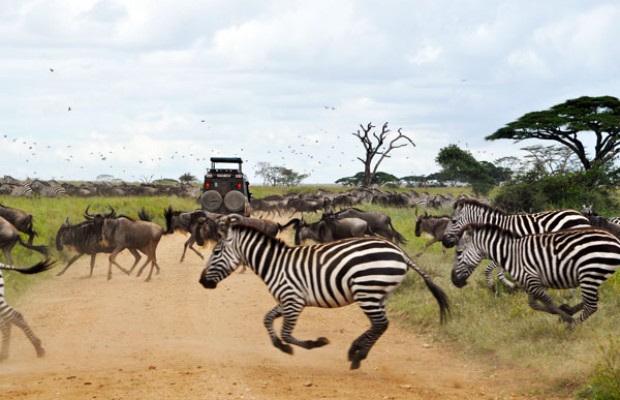
The acrobatic black and white Colobus monkeys welcome you as you pass through Arusha’s main entrance gate. From the lush green swamps...
read more
Only an hour drive off Moshi, on the borders of the Kilimanjaro region lies hidden treasure in a form of hot springs, called Kikuletwa or Chemka. Here you can enjoy swimming in the crystal clear and not so hot water (despite the name) and explore the surrounding area. This 5-6 hours excursion includes a picnic lunch and visit to the Rundugai village nearby. This trip can be extended with overnight at the Maji Moto campsite, where you can enjoy the barbeque under the stars
This trip, starting from Moshi town, will take you through the Marangu gate, leading to the first base camp, you will continue to walk around the Maundi Crater. During this trek your path leads thru breathtaking rainforest, and you will be able to see many wildlife species, including very rare colobus monkeys. After picnic lunch, we will hike back to the Marangu gate from where we’ll transfer you back to your Moshi hotel and conclude our service n this trip.
Visiting the Slope of Mountain Kilimanjaro and get the chance to know Chagga history, Pass through Chagga village, visiting the coffee farms get the opportunity to learn to process coffee from the tree to the cup of coffee, Explore the Chagga caves, eat local food and drink local brewed beer. Visiting colorful local markets in different location where you can see the real bananas. End your tour in the Waterfall and Discover great experience of the Chagga people and what they have to offer.
Materuni is one of the few villages of wonder in Northern Tanzania sitting at the foot of Mount Kilimanjaro. The village is blessed with full of all the beauty worth much visiting for holiday, week-end outing or vacation. While in the village, scenic view of Moshi Town and Mount Kilimanjaro is astonishing. This green village with fresh air from green vegetations welcomes visitors to explore the beauty of the land and cultural heritage of the Chagga people. A cultural experience such as banana beer brewed or coffee roasted the traditional way can be added to your hike.
An hour and a half drive from Moshi to the East lies Lake Challa, a crater lake on the boarder of Tanzania and Kenya. is On arrival the hike starts at the rim of its crater, enjoying the view down on this amazing lake. The trek will take approximately 45 minutes through savanna woodlands leading down to the lake itself. You will spend the full day swimming and relaxing on the lake shore before return hike up the crater walls. There is a adorable campsite at Lake Challa with a place for camp fire, cooking facilities and a bar. In the late afternoon we will arrange the transfer for your return to Moshi.
The Arusha National Park is the only park in Northern Tanzania where you may experience a walking safari. Safari in the Arusha National Park means a light trekking with a ranger. You will walk in the tropical forest and watch animals outside the car. The most amazing thing is that you will be able to walk up to the crater of Meru (the second highest peak of Tanzania and the fifth highest peak of Africa) which is located right in the park. This is a fantastic experience, worth adding to your Tanzanian adventures! After the walking safari, a jeep will drive you to the furthest part of the park – the Momela lakes where you can see pink flamingos as well as many other animals on your way.
Magoroto Forest Estate with its tropical rain forest is the perfect spot for a getaway. The estate is located on an altitude of 850m above sea level where temperatures are pleasant all year long. The estate offers stunning views from the Muheza Valley to the Indian Ocean. Enjoy the lush rain forest with rare plants and bird species, explore the dense tropical forest with organic spices or have a picnic or swim in our beautiful lake! Learn about organic spice production such as cardamom, pepper, cloves, vanilla, cinnamon, tea and many other useful plants.
Hiking boots (or running shoes with a good grip), sportswear, long tights preferable for ladies, swimming costume, Sweater / jacket, Towel, Toiletries, Binocular, Bluetooth speakers or camera if you have.
The Serengeti covers 14,763 sq km, is flourishing with magnificent wildlife. It lies between the shores of Lake Victoria in the west, Lake Eyasi in the south, and the Great Rift Valley to the east. As such, it offers the most complex and least disturbed ecosystem on earth.
The park features endless rolling plains and is contiguous with Masai Mara National Park in Kenya. Serengeti is known as one of the best wildlife sanctuary in the world and an estimated 3 million large animals roam the plains. On it its vast, treeless plains are tens of thousands of hoofed animals, constantly on the move in search of fresh grassland.
One of the Serengeti’s main attractions is the annual migration of wildebeest herds in search for better grazing. Every October and November, more than 1.5 millions of wildebeest and zebras travel from the northern hills to the southern plains for the tropical rains, and then journey west and north after the long rains in April to June.
A unique combination of diverse habitats enables it to support more than 30 species of large herbivores and nearly 500 species of birds. Its landscape, originally formed by volcanic activity, has been sculptured by the concerted action of wind, rain and sun. It now varies from open grass plains in the south, savanna with scattered acacia trees in the centre, hilly, wooded grassland in the north, to extensive woodland and black clay plains to the west. Small rivers, lakes and swamps are scattered throughout. In the south-east rise the great volcanic massifs and craters of the Ngorongoro Highlands. Each area has its own particular atmosphere and wildlife. Kopjes which provide habitats to different animals. The Serengeti boasts large herds of antelope including Patterson’s eland, zebra, gazelles, lion, leopard, cheetah, hyena, impala, and large herds of giraffes. Nearly 500 species of birds have been recorded in the park. The Serengeti is an opportunity for one of the best game viewing in Africa
Ngorongoro Conservation Area (NCA) was established in 1959. It is located 156 kilometers west of Arusha. Ngorongoro and it covers an area of 8300sq/km. Ngorongoro Conservation Area (NCA) it boasts of the finest blend of mountain landscapes shaped by rifts and volcanoes, wildlife, people and archaeological sites in Africa. The concept of multiple land use in a conservation perspective is a deviation from a traditional approach (National Parks & Game Reserves) of regarding conservation as complete absenteeism of human Interference
The NCA becomes one of the first program in the world to pioneering experiment in multiple land use for the benefits of both Maasai people and wildlife in a natural traditional setting. NCA is often called ‘African Eden’ and the ‘Eight Wonder of the Natural World’. Traditional African pastoralists co-operate with Tanzania’s government bodies to help preserve the natural resources of the area and to ensure a fantastic experience for Tourists. Ngorongoro is the World Heritage Site and has also been declared an International Biosphere Reserve by UNESCO, due to its outstanding wildlife and cultural value.
Ngorongoro is the largest unbroken caldera in the world. It is also known as collapsed volcano, this natural amphitheater have 250 square kilometers and 23 km wide. The crater has very steep walls with an average depth of 600 meters at the altitude of 2,286 m above sea level. The crater alone has over 20,000 large animals (half of them zebra & wildebeest). This includes some of Tanzania’s last remaining black rhino. Animals are free to leave or enter the crater but most of them stay because of the abundance of water and food available in the crater floor throughout the year. One animal lacking inside the crater though is giraffe, which cannot negotiate the steep walls easily.
Lake Manyara was once a famous hunting ground, now it is one of Tanzania’s most attractive sanctuaries. Nestling into the steep Rift Valley wall, this shallow alkaline lake is surrounded by ancient Baobab trees, ground water forest of fig and mahogany and open grasslands. A wealth of surprisingly varied vegetation sustains a wealth of wildlife, nourished by chattering streams bubbling out of the escarpment base and waterfalls spilling over the cliff.
Deep in the south of the park, hot springs bubble to the surface in the shadow of the escarpment. Hippo wallows near the lake’s borders of sedge. Two famous spectacles in Lake Manyara National Park are the tree-climbing lions, which spend most of the day spread out along the branches of acacia trees six to seven meters above ground, and tree climbing pythons. Nestling at the base of the Great Rift Valley escarpment the park is noted for its incredible beauty. As visitors enter the gate they pass into the lush forest, home to troops of baboons and blue monkeys
Further along, the forest opens up to the woodlands, grassland, swamps and beyond, the soda lake itself, covering 390 sq km and sanctuary to over 400 species of bird including flamingo, pelican, storks, sacred ibis, cormorants and Egyptian geese. The park is particularly noted for its huge herds of buffaloes and elephants. Also represented here are giraffe, impala, hippo and a great variety of smaller animals.
Tarangire National Park is the sixth largest park in Tanzania. This beautiful park stretches southeast of Lake Manyara around the Tarangire River. Just a few hours’ drive from the city of Arusha or Moshi, Tarangire is a popular stop for safaris travelling through the northern circuit on their way to Ngorongoro and the Serengeti. It is the vast number of Baobabs trees that first capture the eye as you enter the park. The gently rolling countryside is dotted with these majestic trees, which seem to dwarf the animals that feed beneath them.
The park owes its name to Tarangire River which flows across the area. Its banks are characterized by dense vegetation of acacia and mixed woodland. The surrounding area however, is dominated by huge baobab trees and to a lesser prominence, old doum palm trees and black cotton grass.
Tarangire also has regions of quite dense bush, but with high grasses and huge old baobab trees instead of the green forests of Manyara. The land is hilly and dominated by the impressive valley of the Tarangire River, which attracts good numbers of migrant animals during the dry months, especially between July and September.
The unique aspect of this Park is the annual animal immigration that takes place during the dry season. Tarangire National Park has some of the highest population density of elephants anywhere in Tanzania, and its sparse vegetation, makes it a beautiful and special location. The park extends into two game controlled areas and the animals are allowed to move freely throughout. From the dryness of July, large herds of zebra, wildebeest, hartebeest and in particular, elephants can be found here in high densities until October when the short wet season allows them to move to new grasslands. Breathtaking views of the Maasai Steppe and the mountains to the south make a stop at Tarangire a memorable experience
The acrobatic black and white Colobus monkeys welcome you as you pass through Arusha’s main entrance gate. From the lush green swamps surrounded by thick forest in the Ngurdoto Crater, up through the scenic beauty of the Momela Lakes, each a startlingly different hue, through to the chilly alpine like tundra on Mount Meru, Arusha National Park is a gem of a park, although very accessible, it is surprisingly not heavily visited by tourists. Explore the diverse and changing landscapes, hike along scenic mountain and forest trails and view huge masses of wildlife in this quaint and charming park.
There are three major attractions in the park. First is the Ngurdoto Crater, which is sometimes called “mini Ngorongoro”. Secondly, there are the Momella lakes, which are shallow alkaline lakes which get their water from underground streams. Finally, there is the spectacular Meru Crater. Mount Meru (14,990 feet) is described as “one of the most rewarding mountains to climb in Africa”. Visitors can climb the mountain, or organize walking safaris. The park also provides great views of Mt. Kilimanjaro and Mt. Meru on clear days.
The remains of a large volcano, the Ngurdoto Crater is a steep sided bowl of lush swamps and riverine forest, which is home to elephant, buffalo, warthog, baboon, reedbuck, Colobus monkeys and duikers. Mosses, ferns, lichens and orchids thrive in the damp atmosphere of the crater, giving way to huge mahogany, olive and date palm trees on the drier crater walls.
The tranquil beauty of the Momela Lakes brings to the park a wide variety of bird-life (over 380 species) including flamingos, waterfowl, African pochard, ibis, heron, egrets, colorful turacos and trogons. The rocky crags of Mount Meru sees a large number of birds of prey and you may be lucky enough to spot lammergeyers, a large, rare bird of prey, floating on the up draughts from the crater. Other game includes hippo, giraffe, zebra, antelope, blue monkey, dik-dik, reedbuck, klipspringers, leopard, and spotted hyena.